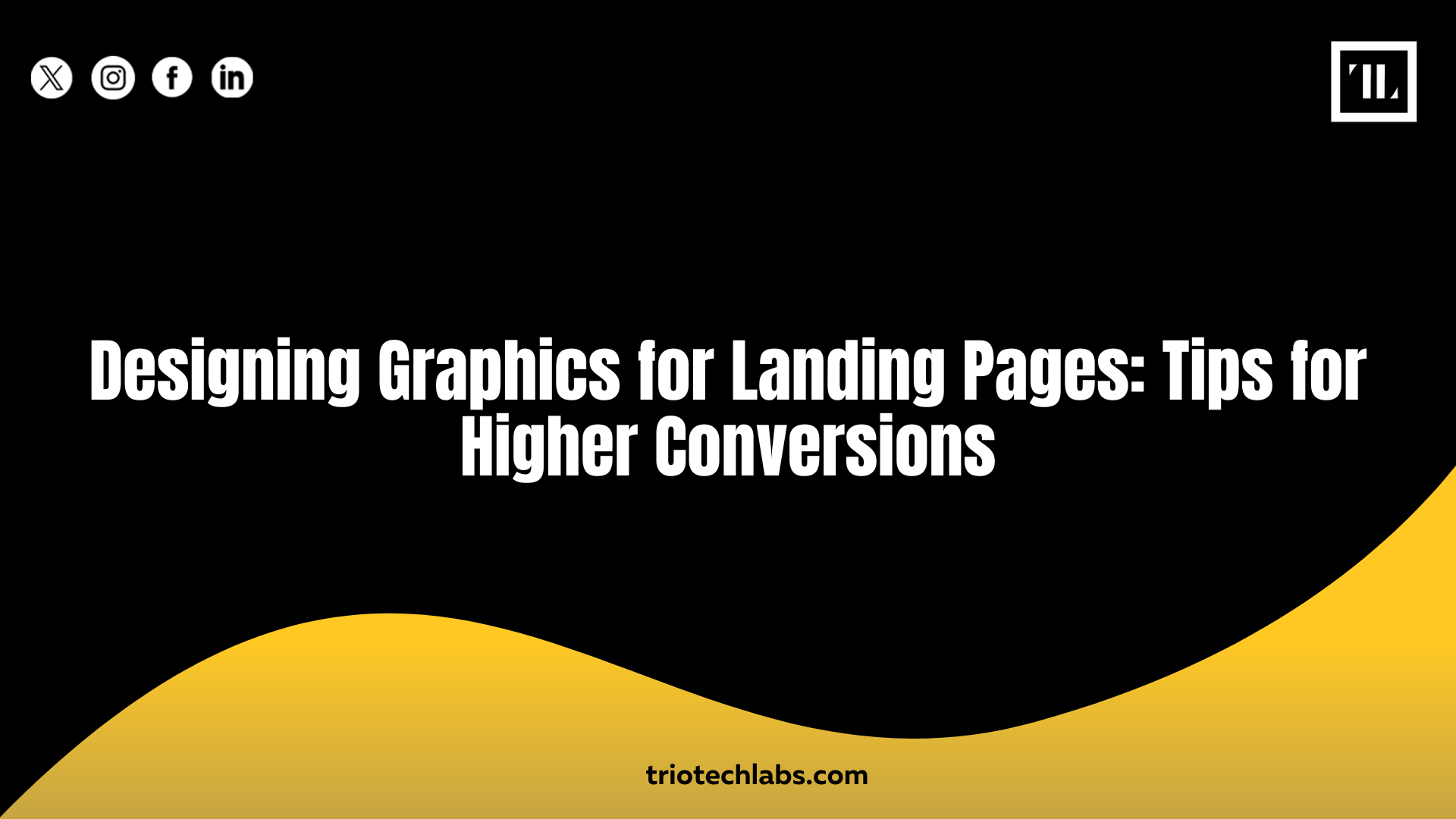
Graphics on a landing page are the decision-makers. They either guide a visitor toward conversion or confuse them into bouncing. To design graphics that truly convert, you need to use visuals with intention: guide attention, clarify your offer, and create an experience that works on every screen. This guide shows you how to do just that with proven, conversion-focused design strategies.
How to Design Landing Page Graphics That Drive Conversions
Creating visuals that influence user behavior isn’t guesswork—it’s structured design thinking. Here’s how to do it right.
- Use Visual Hierarchy to Guide User Attention
Lead with structure. Use size, color, and positioning to control where the eye goes. Headlines should dominate, CTAs should pop, and supporting graphics should follow the natural reading flow.
Balance whitespace and avoid clutter. Design in clear sections so the user always knows what to look at next.
- Design a Compelling Hero Section with Purposeful Imagery
Your hero section sets the tone. Use high-quality visuals that align with your product or service. Whether it’s a photo, mockup, or animation, make sure it connects emotionally and reinforces your message.
Place your headline and CTA within the image’s focal zone for better interaction.
- Make CTAs Stand Out Through Contrast and Placement
Use bold colors or buttons that stand out against the background. Contrast is key. Don’t bury the CTA—position it above the fold and repeat it where it makes sense throughout the page.
Add directional cues like arrows or gaze-focused imagery to lead users toward the action.
- Keep Graphics On-Brand and Consistent Across the Page
Your visuals must reinforce your identity. Use the same color palette, illustration style, and typography throughout. Consistency builds trust.
Avoid mixing clip art, 3D renders, and flat icons. Instead, choose a single, cohesive visual language.
- Use Illustrations or Icons to Simplify Complex Info
Break down steps, features, or benefits using icons or line illustrations. This helps users scan and understand quickly, especially important for mobile viewers.
Keep iconography minimal, intentional, and clear.
- Highlight Benefits with Visual Cues (Arrows, Color Blocks, etc.)
Draw attention to key features using strategic visuals. Arrows, lines, badges, or highlighted sections can guide the eye to key content or value propositions.
Make sure these enhancements support, not distract from, the message.
- Optimize All Graphics for Fast Load Times
Slow load = lost lead. Compress images using tools like TinyPNG or WebP formats. Avoid unnecessary animations or video backgrounds unless they serve a clear purpose.
Use SVGs for icons and illustrations to keep files lightweight and crisp on all screens.
- Ensure All Visuals Are Mobile-Responsive
Every graphic must scale well across screen sizes. Use media queries and scalable formats. Always test designs on actual mobile devices, not just emulators.
Rearrange or simplify visuals for vertical viewing and smaller touch targets.
Mistakes to Avoid in Landing Page Graphic Design
Don’t let visuals sabotage conversions. Watch out for these common missteps:
- Overloading with Distracting Visuals: Too many elements overwhelm and confuse users.
- Poor CTA Visibility or Confusing Layout: Makes action unclear or inaccessible.
- Inconsistent Style or Branding: Undermines credibility and trust.
- Using Stock Images with No Context or Relevance: Feels generic and unauthentic.
- Ignoring Mobile and Tablet Responsiveness: Shrinks your audience reach.
How to Test and Improve Your Landing Page Visuals
Visuals should evolve based on performance, not just preference. Here’s how to refine them:
- A/B Test Different Hero Images or CTA Styles: See what gets more engagement.
- Use Heatmaps to Analyze Visual Attention Areas: Identify what gets seen and what gets ignored.
- Review Bounce Rate and Conversion Metrics: Connect visuals to performance.
- Collect User Feedback on Page Clarity and Appeal: Listen to your audience.
- Continuously Refine Based on Performance Data: Design is an iterative process.
Conclusion
Strong graphic design push visitors to act. A strategic visual hierarchy, brand-consistent assets, and well-placed CTAs can lift your conversion rates significantly. Keep testing and refining to find what resonates best.
Easy Steps to Design Graphics That Convert:
- Start With Clear Visual Hierarchy To Guide Focus
- Use Strong Hero Imagery To Capture Interest
- Make CTAs Visually Distinct And Strategically Placed
- Maintain Brand Consistency In Every Graphic Element
- Simplify Content With Icons And Visual Cues
- Optimize All Images For Speed And Responsiveness
- A/B Test Different Visual Elements To Improve Results
At TRIOTECH LABS, we help brands design landing pages that perform great. Our team blends stunning UI/UX with data-backed graphic strategies to ensure every pixel has a purpose. Turn visuals into growth engines with us:
